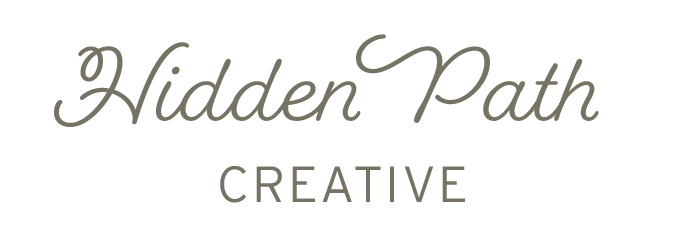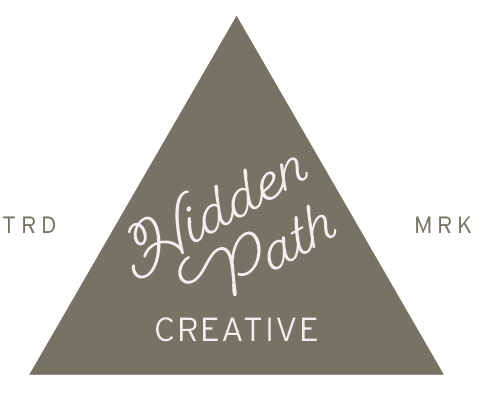How Packaging Impacts Your Brand Perception in Stores
Walk into any Target, Whole Foods, or boutique shop and take a moment not to shop. Instead, look around, really look. What catches your eye? What makes you stop, turn, and maybe toss that product in your cart even if it wasn’t on your list? Spoiler alert: it’s not a Facebook ad or the founder’s origin story. It’s packaging.
At Hidden Path Creative, we live and breathe packaging strategy for product-based founders who are scaling past DIY and aiming for shelves (and sales). This post breaks down exactly how packaging impacts your brand perception in stores, and why thoughtful, retail-ready packaging design is one of the smartest investments you can make.
Let’s get into it, with zero jargon and just enough sass.
First Impressions Matter. Like, a Lot.
Here’s the reality: consumers take just 7 seconds to make their first impression of a product on the shelf. And in those few seconds, your packaging does all the talking.
Are you...
Bold and confident?
Luxe and minimal?
Natural and organic?
Fun and funky?
If your packaging doesn’t answer that instantly and clearly, your product might get passed over for one that does. And that’s not a knock on your formula or ingredients; it’s about the story you’re telling before they even pick it up.
Key Stat
According to a 2022 study published in the Journal of Retailing and Consumer Services, over 72% of consumers said packaging design influenced their purchasing decisions, often more than online reviews or price.
What Consumers See vs What They Feel
Packaging doesn’t just say “Hi, I’m here!”, it gives off a vibe. That vibe helps shoppers decide in a split second whether your product is a match for their identity, lifestyle, and values.
Let’s look at a few packaging cues and the feelings they tend to evoke:
Matte finishes feel luxe and elevated. Think high-end skincare or premium oils, products that whisper “treat yourself.”
Kraft paper or textured labels give off earthy, sustainable, natural vibes. Perfect for clean beauty or wellness brands that want to say, “We’re close to the earth, and that matters.”
Metallic foils or spot gloss scream bold, high-tech, or modern. Great for supplements or high-performance serums that want to show off a little shine.
Hand-drawn illustrations bring an artisanal, small-batch, creative energy, amazing for jewelry packaging or indie brands that want to feel handmade and heartfelt.
These small visual choices tell a bigger story, even before a customer picks up the product. Your goal? Make sure the story you’re telling matches what you’re selling.
It’s Not Just Pretty, It Has a Job
Beautiful packaging is excellent. But if it doesn’t work in a store setting? It’s just expensive clutter.
Packaging has to:
Stand up (literally) on shelves, pegs, or displays.
Survive shipping without busting open or looking crushed.
Be easy to open (no one wants to wrestle a clamshell).
Include required info (looking at you, FDA guidelines).
Guide the customer to understand your product fast.
That’s where most DIY founders hit a wall.
They may have a gorgeous aesthetic and brand vision… but not the technical expertise to translate that into packaging that performs and sells in-store.
At Hidden Path Creative, we don’t just make it cute; we make it retail-ready.
The Trust Factor: Why Packaging Builds Credibility
Here’s the tea: if your packaging looks unfinished, cheap, or hard to read, customers assume the product is, too. Harsh? Maybe. True? Absolutely.
Packaging that looks professional and consistent builds trust. And trust is what gets you:
Picked up
Tossed in a cart
Bought again
Retailers know this, too. In fact, most buyers won’t even consider a product if the packaging looks amateur. (Ask us how many founders have had to do a last-minute packaging overhaul before a pitch; we’ve seen it all.)
The Science of Shelf Appeal
There’s actually psychology behind why specific designs draw us in. It’s not magic, it’s human behavior.
Key Design Cues That Influence Shoppers
Color psychology: Soft blues = calming (hello, wellness brands); bold reds = energetic (great for snack foods).
Symmetry & layout: Clear hierarchy helps the eye understand info fast.
White space: Signals clarity and quality; overcrowded designs feel cheap.
Texture & finish: Tactile cues influence perceived value.
A product packaging designer knows how to tap into these principles and layer them with your brand story to create something that works with your customer’s brain, not against it.
It’s Not “Just Packaging”, It’s Your 24/7 Salesperson
Let’s reframe the way we think about packaging.
Your packaging is:
The first interaction a stranger has with your brand
The most visible expression of your product’s value
Your sales pitch in a crowded aisle
The silent rep who works without rest, 365 days a year
It’s doing all that while also needing to meet retailer specs, safety compliance, and cost-efficiency. Whew.
You wouldn’t DIY your tax strategy or your trademark filing, so why treat packaging like a side task?
Packaging for Skincare, Beauty, and Jewelry: What’s Unique?
We work with a lot of skincare, beauty, and jewelry brands, so let’s break down a few specific nuances in those categories.
Skincare Packaging Design
Needs to be legible in small print (hello, ingredient lists)
Often goes on tiny tubes or jars, so every millimeter counts
Pro Tip
Use QR codes for extra education without cramming your packaging with text.
Beauty Packaging Design
Your product must reflect aspiration and identity; your customer is choosing you partly because of the vibe.
Requires high durability for makeup bags, spills, and similar situations.
Often gets photographed or shared, so the design should feel “Instagrammable”
Pro Tip
Bold, simple icons or color-blocking stand out best on social.
Jewelry Packaging Design
Often represents giftability, so unboxing experience = key
Needs to protect delicate items in shipping and on shelves
Should feel special, even if you’re scaling production
Pro Tip
Add a tactile detail (embossing, velvet insert, or ribbon pull) to up the luxe factor without blowing your budget.
Why Founders Hit a Wall (And How to Get Over It)
Let’s be honest, most product-based founders are doing all the things. So when it comes to packaging, it’s no surprise that roadblocks pop up. Here are some of the most common ones, and how Hidden Path Creative helps you work through them:
Roadblock: Not retail-ready
Why it matters: Buyers may love your product, but if the packaging doesn’t meet retail specs, it can be a quick pass or a request to redo it.
How we help: We design with retailer requirements and compliance baked in from day one, so you don’t hit surprise roadblocks later.
Roadblock: Packaging costs are too high
Why it matters: High packaging expenses eat into your margins, especially as you scale.
How we help: We help you find cost-effective options that still feel elevated, without blowing your budget.
Roadblock: Confusing messaging or layout
Why it matters: If shoppers don’t instantly understand what the product is or who it’s for, they move on.
How we help: We clarify your design hierarchy and messaging to make your product’s purpose and benefits pop.
Roadblock: Compliance issues
Why it matters: You could face legal issues, delays, or product rejection, especially in skincare and food categories.
How we help: We’re fluent in FDA labeling, ingredient panel design, fair packaging laws, and other compliance must-haves.
Roadblock: Packaging that doesn’t scale
Why it matters: Manual labeling, fragile materials, or complicated unboxing might be fine for small batches, but they don’t work when you grow.
How we help: We design with scale in mind, thinking about fulfillment, automation, and retail environments from the start.
What a Product Packaging Designer Actually Does
Not to be dramatic, but working with a packaging designer is like having a translator, therapist, and hype crew in one. We take your:
Vision
Product information
Retail ambitions
Technical requirements
Budget
Brand identity
...and turn that into a package that checks all the boxes without losing your soul.
We also understand dielines, barcodes, ink traps, compliance zones, and packaging substrates, so you don’t have to worry about them.
Plus, you get support all the way from concept through printer handoff. No “good luck!” vibes here.
Hidden Path Creative: Where Strategy Meets Shelf Appeal
At Hidden Path Creative, we’re not a design factory. We’re your packaging partner.
That means:
Fast, collaborative design process
Strategic thinking is baked into every design decision
A deep love of helping founders feel legit on shelves
Over 20 years of national retail experience guiding every layout, label, and dieline
Whether you’re launching in Target or getting ready for your first tradeshow, we make sure your packaging is ready to meet the moment and turn heads.
At Hidden Path Creative, our mission is to support product-based businesses with a standout packaging design that grows their brand recognition and sales.
If you want to work together, please drop us a line here. We love connecting the creators of innovative products.
Oh, and come say hi on Instagram, and join a community of like-minded product entrepreneurs!


